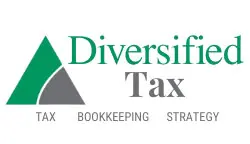Who Claims a Child on Taxes When You Share Custody?
Table of Contents
Who Claims a Child on Taxes When You Share Custody?
Are you grappling with the complexities of claiming a child on taxes when both parents have 50/50 custody? You’re not alone. This issue is a source of confusion for many parents who share custody of their children. Determining who gets to claim the child as a dependent can impact your tax deductions and credits significantly. In this article, we will shed light on the rules and guidelines surrounding the child tax credit and claiming dependents with 50/50 custody. We’ll explore the IRS regulations and delve into the factors that could sway the decision in your favor. Whether you’re divorced, separated, or simply sharing custody, understanding the rules can help you make informed decisions regarding your taxes and potentially save you money. So, if you’re wondering who claims the child on taxes with 50/50 custody, keep reading to gain clarity on the matter and optimize your tax situation.
Understanding Child Custody Arrangements
Before we dive into the intricacies of claiming a child on taxes with 50/50 custody, it’s essential to have a clear understanding of what 50/50 custody entails. In a 50/50 custody arrangement, both parents share equal time and responsibility for the child. This means that the child spends an equal amount of time living with each parent, ensuring both parents have an equal say in major decisions affecting the child’s life.
While 50/50 custody is often seen as an ideal arrangement for the child’s well-being, it can complicate matters when it comes to claiming a child on taxes. Traditionally, the custodial parent, i.e., the parent with whom the child resides for the majority of the year, has the right to claim the child as a dependent. However, in cases of 50/50 custody, where both parents share equal time, this can be a gray area. Let’s explore the tax benefits associated with claiming a child and how they apply in such situations.
Overview of Tax Benefits for Claiming a Child
Claiming a child as a dependent on your tax return can provide significant tax benefits. The most notable benefit is the Child Tax Credit, which allows eligible parents to reduce their tax liability by a specific amount for each qualifying child. In addition to the Child Tax Credit, claiming a child as a dependent may also make you eligible for other tax breaks, such as the Earned Income Tax Credit (EITC), the Child and Dependent Care Credit, and the Head of Household filing status.
It’s important to note that to qualify for these tax benefits, the child must meet certain criteria. The child must be under the age of 19, or under 24 if a full-time student, and must have lived with you for more than half the year. However, in cases of 50/50 custody, determining who meets these requirements can be challenging. Let’s explore the IRS rules for claiming a child with 50/50 custody to gain a better understanding.
IRS Rules for Claiming a Child with 50/50 Custody
The IRS has specific rules in place to determine who can claim a child as a dependent when parents have 50/50 custody. According to IRS regulations, the custodial parent is generally the one who has physical custody of the child for the greater part of the year. However, the IRS also allows an exception to this rule. If the custodial parent releases the claim to the noncustodial parent, the noncustodial parent may be able to claim the child as a dependent.
To release the claim, the custodial parent must complete and sign IRS Form 8332, also known as the Release/Revocation of Release of Claim to Exemption for Child by Custodial Parent. This form allows the custodial parent to transfer their right to claim the child as a dependent to the noncustodial parent for a specific tax year. It’s important to note that this release is valid only for the year specified on the form and must be attached to the noncustodial parent’s tax return.
While this may seem straightforward, there are certain factors to consider when determining who can claim the child in cases of 50/50 custody. Let’s explore these factors in more detail.
Factors to Consider When Determining Who Can Claim the Child
When both parents share 50/50 custody, the decision of who gets to claim the child as a dependent may not be as clear-cut as it seems. Several factors can influence this decision, and it’s crucial to consider them before making a claim. Some of the factors that the IRS and courts may consider include:
- Financial support: Which parent provides the majority of financial support for the child? This includes expenses such as housing, food, clothing, education, and healthcare.
- Physical custody: Although both parents may have equal time with the child, the IRS may still consider one parent as having physical custody if the child spends more nights with that parent.
- Income levels: If one parent has a significantly higher income than the other, it may make more financial sense for that parent to claim the child, as they would benefit more from the tax deductions and credits associated with claiming a dependent.
- Parental agreement: If both parents agree on who will claim the child, they can come to a mutual decision and complete Form 8332 accordingly. However, it’s important to note that the IRS may still require documentation to support this agreement.
These factors are not exhaustive, and the IRS and courts may take other circumstances into consideration when determining who can claim the child. It’s crucial to communicate and cooperate with the other parent to reach a fair and mutually beneficial decision.
Communication and Cooperation with the Other Parent
When it comes to claiming a child on taxes with 50/50 custody, open communication and cooperation with the other parent are key. Discussing your intentions and coming to an agreement can help avoid conflicts and ensure both parents are on the same page. If you both agree that one parent will claim the child, make sure to document this agreement in writing and keep a copy for your records.
It’s also essential to maintain clear and open lines of communication throughout the tax filing process. Discuss any changes in financial circumstances, custody arrangements, or other relevant factors that could impact the decision of who claims the child. By working together and keeping each other informed, you can minimize potential disputes and ensure a smoother tax filing experience.
Documenting Custody Arrangements and Expenses
To support your claim of being the custodial parent or to prove that you meet the requirements for claiming a child on taxes with 50/50 custody, it’s crucial to maintain accurate records and documentation. Keep a detailed log of custody arrangements, including the dates and times the child spends with each parent. Additionally, keep records of any expenses you incur for the child’s well-being, such as medical bills, school fees, and childcare expenses.
Documentation is particularly important if there is any disagreement or dispute regarding the custody arrangement or who should claim the child. Having concrete evidence to support your claim can make a significant difference in resolving such disputes.
Seeking Legal Advice or Mediation If Needed
In some cases, determining who claims the child on taxes with 50/50 custody may become a contentious issue. If you and the other parent are unable to come to an agreement or if there are other complex factors involved, it may be wise to seek legal advice or consider mediation.
A family law attorney or mediator can provide guidance and help facilitate discussions between you and the other parent. They can ensure that your rights and interests are protected and help you navigate the complexities of claiming a child on taxes with 50/50 custody.
Other Tax Considerations for Parents with Shared Custody
While the focus of this article has been on claiming a child as a dependent, it’s essential to consider other tax-related aspects when you have shared custody. For example, both parents may be eligible to claim certain tax deductions and credits, such as the Child and Dependent Care Credit or education-related tax benefits. It’s important to explore these options and determine how they can maximize your tax savings.
Additionally, it’s crucial to maintain accurate records of any child-related expenses, as these may be deductible or qualify for tax credits. Expenses such as medical bills, school fees, extracurricular activities, and even transportation costs for visitation can potentially be claimed as deductions or credits.
Conclusion and Final Thoughts
Navigating the complexities of claiming a child on taxes with 50/50 custody requires a thorough understanding of the IRS rules and regulations. By understanding the factors that influence the decision, communicating and cooperating with the other parent, and maintaining accurate records, you can optimize your tax situation and potentially save money.
If you find yourself in a situation where claiming a child on taxes with 50/50 custody becomes contentious or confusing, don’t hesitate to seek legal advice or consider mediation. Professionals in family law can provide the guidance and support you need to navigate the complexities and ensure a fair resolution.
Remember, the key to resolving any issues related to claiming a child on taxes with 50/50 custody is open communication, cooperation, and a focus on the best interests of the child. By working together and understanding the rules, you can make informed decisions that benefit both you and your child’s financial well-being.




